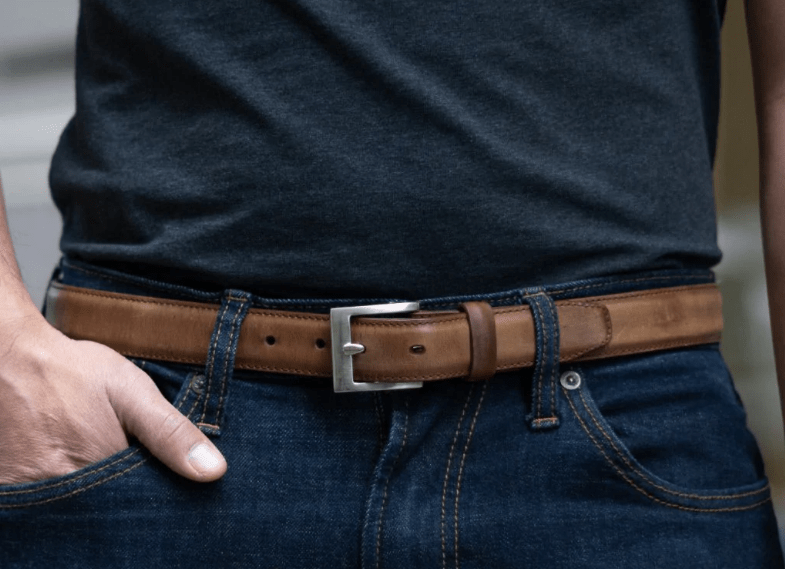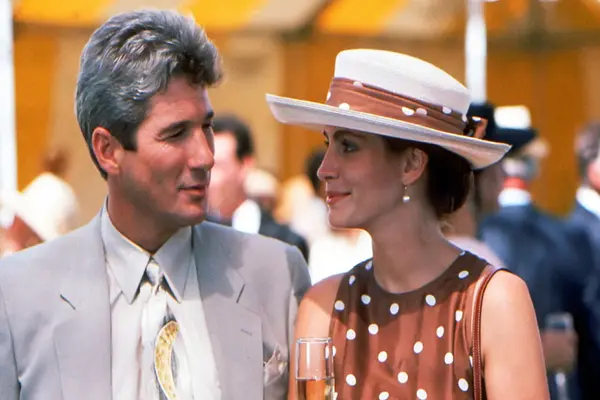Belts are often overlooked when putting together an outfit. That’s partly because they sound like an extra expense and partially because of a lack of knowledge as to what color and kind would go with a certain look. Good heavens, I have seen many men wearing threadbare, faded belts! It shows how careless they are about this piece of clothing. However, just as one leak will sink a ship, and one sin will destroy a sinner, a torn or mismatched belt can ruin your entire outfit, no matter how good the other pieces of the outfit are.
Belts do a lot more than just hold up your pants. Provided that they are good-quality and match your outfit, they will add finish and class to your overall look. From what to keep in mind when buying a belt to what to keep in mind when choosing one to complement a getup, this guide is a quick sartorial lesson on belts. Excited? Let’s get started.

What to Keep in Mind When Buying a Belt?
-
Belt Size
It’s a myth that belts are a free-size item. Just as there are different waist sizes, they come in different lengths. If the size of a belt is not mentioned, a quick way to find out if it’s the right size is to make sure it extends two or three beyond the buckle after you slide it through your pants. A long tail that hangs down or is wrapped around the waist looks out-and-out ugly.
Like other objects, a belt has a width as well as a length. Therefore, whether a 40mm, which is the standard belt width, or 35mm belt would easily slide through your pants should factor into your selection. Sleek belts are in fashion these days to run through formal pants. As a safe rule of thumb, go with a thick belt for jeans pants and a thin belt for formal pants.
| download avast full crack until 2050 |
-
Material
While most belts are made of leather or a material that looks like leather (i.e., faux leather), you have many other options such as men’s rhinestone belts, fabric belts, metallic belts, and even rubber belts. And, who knows? The endless imagination and creativity of the fashion industry may produce wooden belts. Don’t tell me they are already on the market, are they?
-
Material Quality
You want to be sure that you get what they claim. For instance, many sellers claim that their belts use original leather or leather made of some exotic animal’s skins, but they often lie. So, to find out if a belt uses genuine or synthetic leather, you can bend it a little to see if it has some wrinkles. In case it does, it’s most probably original.
Another way, as I was told by a leather manufacturer himself, is trying to burn the leather. If it burns easily, it’s original. However, you never want to try this method. The seller would burn you in return. Well, not really unless he has a temper issue and/or has served a prison sentence.
For further quality assurance, look for any loose threads, discoloration, and corrosion of the metallic parts.
-
Color
You want to have a variety of color options to enjoy different outfits. As a general rule, the choice of color depends on the color of your footwear. A brown belt goes with brown shoes, and a black belt goes with black shoes. However, brown and black are not the only colors that shoes come in. Casual shoes, such as espadrilles and sneakers, come in various color options ranging from white to red. However, when buying a belt for such casual shoes, the texture of the belt matters more. And that’s what we are going to discuss in our next segment.
-
Texture
The shiny smooth brown belt you wear ‘round your formal pants won’t work with sky blue jeans paired with white canvas shoes. In casual settings, it’s more about texture than color. A fabric belt of any color will do the trick.
-
Belt Edges
The edge of a belt is either straight or flattened, and either stitched or unstitched. Belts having plain straight edges with no stitching are genetically casual and go with jeans and chino pants. The other three edges, however, can blur well into both casual and formal arrangements.
-
Metallic Parts
While the buckle is mostly the only metallic part a belt has, some belts such as men’s rhinestone belts have the end tips and loops also made of metal. Talking about buckles, they come in different sizes, shapes, and colors. Far as the size is concerned, the larger the buckle is, the more casual the belt is. Formal belts have fairly simple and flat buckles.
For shapes, there are various options as well, including square-shaped frames, statement buckles, click-on buckles, and reversible buckles. Out of these, statement buckles are solely designated for casual belts. About the color, formal belts have silver, golden, or black buckles with not much sheen. The rest are all causal options.
-
Belt Tips
If you are a pedantic soul who likes to get into the nitty-gritty of everything, you want to pay attention to the belt tips as well. Trapezoidal and pointy tips are formal, while straight and curved are informal tips. Belts with rounded tips are specially designed for women.
What to Keep in Mind When Choosing a Belt?
Color and Texture Coordination
Color coordination is the first and foremost thing you need to take care of when putting together with trendy men fashion outfit. Belts are normally coordinated with shoes. Hence, their colors should ideally be the same.
For better coordination, not only should they be the same color, but they should also have the same finish and, if possible, the same texture. If, for example, you have shiny dark brown brogues, a shiny dark brown belt would best pair up with it. Similarly, brown suede shoes would make the best combination with a brown suede belt.
Now that you know all you should know about belts, it’s time to buckle up. The Rhinestone Belt Store produces premium-quality men’s rhinestone belts. Get one to sparkle up your party look.





